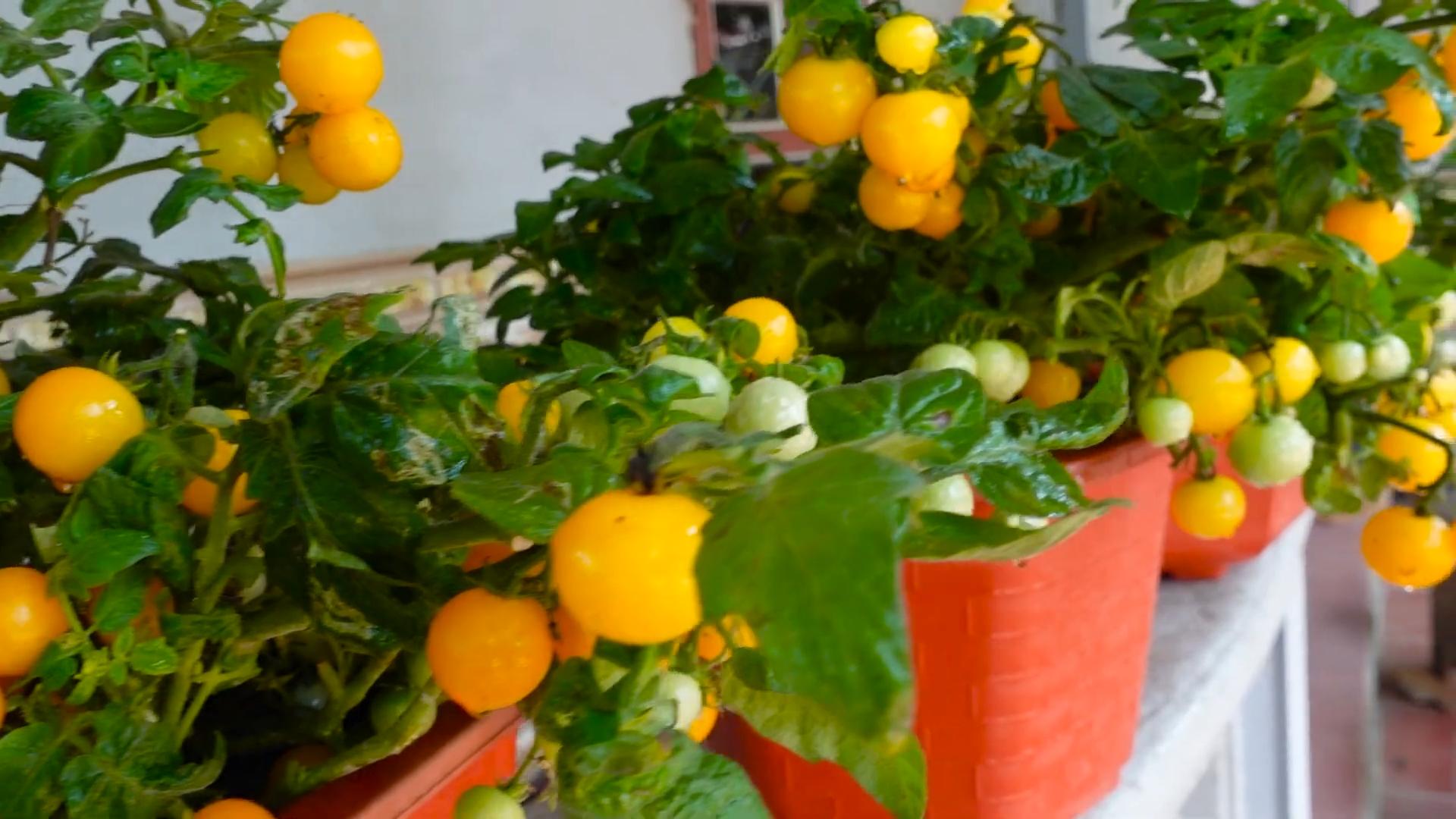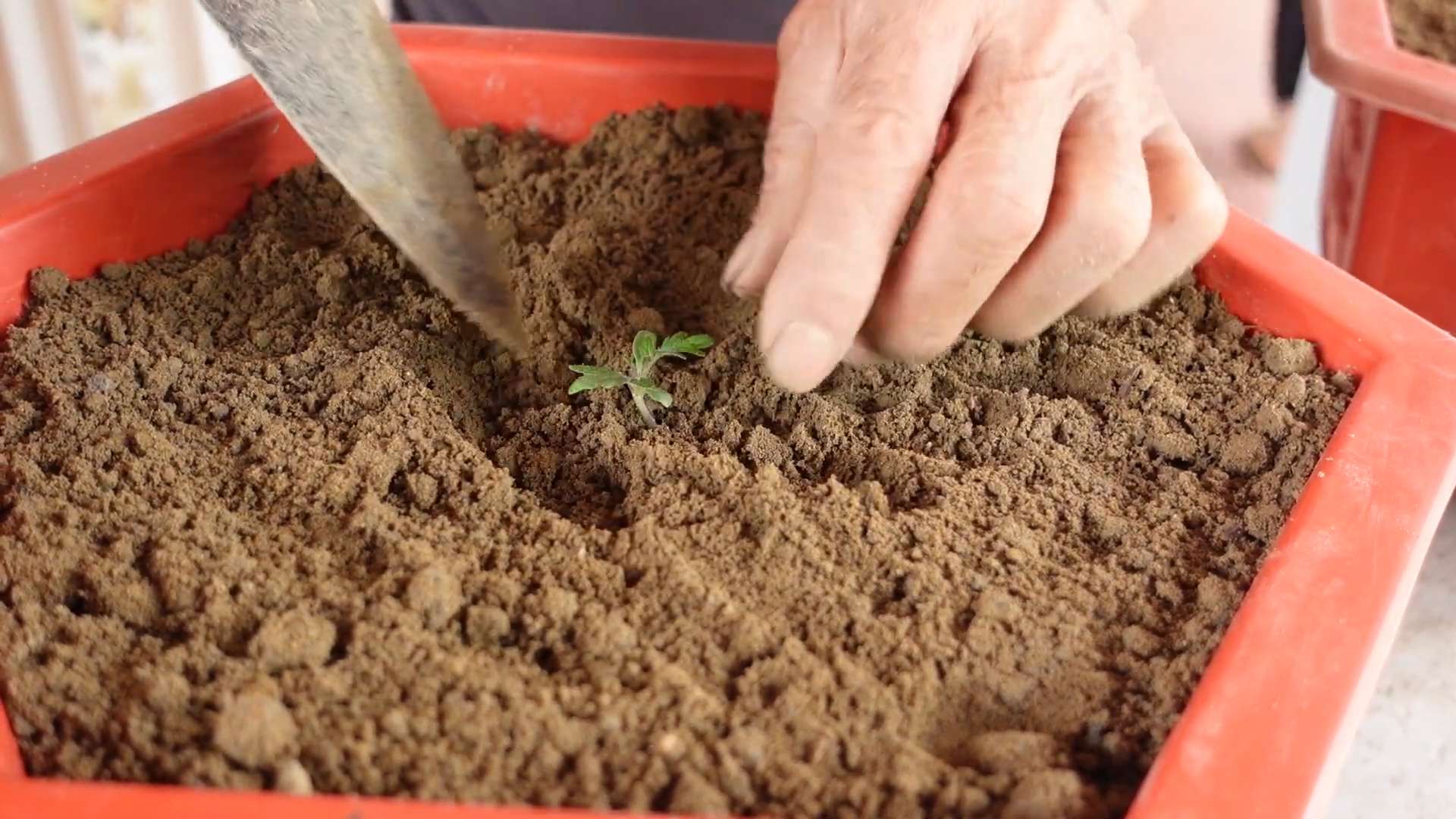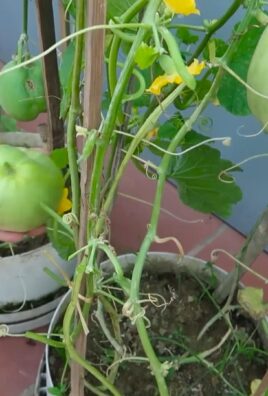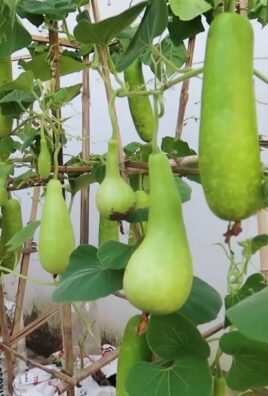Balcony Cherry Tomatoes: Imagine stepping onto your balcony and plucking a handful of sun-ripened, juicy cherry tomatoes, bursting with flavor. Sounds like a dream, right? Well, it doesn’t have to be! You don’t need acres of land to enjoy the satisfaction of growing your own food. This DIY guide is packed with simple, effective tricks to transform your balcony into a thriving mini-farm, starting with everyone’s favorite: cherry tomatoes.
Growing tomatoes in containers has a surprisingly long history. From humble beginnings in South America, tomatoes gradually made their way across the globe, becoming a staple in cuisines worldwide. The beauty of cherry tomatoes, in particular, is their adaptability. They’re perfectly suited for container gardening, making them ideal for urban dwellers and anyone with limited space.
But why should you bother with growing balcony cherry tomatoes yourself? Store-bought tomatoes often lack the intense flavor and freshness of homegrown varieties. Plus, there’s something incredibly rewarding about nurturing a plant from seed to harvest. In this article, I’ll share my favorite DIY tricks and hacks to help you cultivate a bountiful crop of delicious cherry tomatoes, even if you’ve never gardened before. We’ll cover everything from choosing the right container and soil to providing the perfect amount of sunlight and water. Get ready to impress your friends and family with your green thumb and enjoy the taste of summer, right from your balcony!

Growing Delicious Cherry Tomatoes on Your Balcony: A DIY Guide
Hey there, fellow balcony gardeners! I’m so excited to share my tried-and-true method for growing plump, juicy cherry tomatoes right on your balcony. Forget those bland supermarket tomatoes – nothing beats the taste of homegrown goodness, especially when you’ve nurtured them yourself. This guide will walk you through every step, from choosing the right variety to harvesting your bounty. Let’s get started!
Choosing the Right Cherry Tomato Variety
Okay, first things first, you need to pick the perfect cherry tomato variety for your balcony. Not all tomatoes are created equal, especially when space is limited. Here’s what I look for:
* Determinate vs. Indeterminate: This is crucial! Determinate varieties are bush-type tomatoes that grow to a certain size and then stop. They’re more compact and ideal for containers. Indeterminate varieties, on the other hand, keep growing and producing fruit throughout the season, requiring staking or caging. For balconies, determinate varieties are generally easier to manage, but indeterminate varieties can provide a longer harvest if you’re willing to put in the extra effort.
* Size and Shape: Cherry tomatoes come in all shapes and sizes! You’ve got your classic round cherries, teardrop-shaped grape tomatoes, and even pear-shaped varieties. Consider what you like to eat and how much space you have. Smaller varieties like ‘Tiny Tim’ are perfect for really small balconies.
* Disease Resistance: Look for varieties that are resistant to common tomato diseases like Fusarium wilt (F), Verticillium wilt (V), and Tomato Mosaic Virus (ToMV). This will save you a lot of headaches down the road.
* My Personal Recommendations: I’ve had great success with ‘Patio Princess’ (determinate, compact), ‘Sungold’ (indeterminate, incredibly sweet), ‘Sweet Million’ (indeterminate, prolific producer), and ‘Roma’ (determinate, great for sauces).
Gathering Your Supplies
Before we dive into planting, let’s make sure you have everything you need. Here’s my checklist:
* Tomato Seeds or Seedlings: You can start from seed or buy seedlings from a local nursery. Seedlings are faster, but starting from seed is more rewarding (and cheaper!).
* Large Containers: Choose containers that are at least 12 inches in diameter and 12 inches deep. Bigger is better, as it gives the roots more room to grow. I prefer using fabric pots, as they allow for better drainage and aeration.
* High-Quality Potting Mix: Don’t skimp on the potting mix! Use a well-draining mix specifically formulated for containers. Avoid using garden soil, as it can compact and suffocate the roots.
* Tomato Cage or Stakes: If you’re growing indeterminate varieties, you’ll need a sturdy tomato cage or stakes to support the plants as they grow.
* Fertilizer: Use a balanced fertilizer specifically formulated for tomatoes. I like to use a slow-release fertilizer at planting time and then supplement with a liquid fertilizer every few weeks.
* Watering Can or Hose: You’ll need a way to water your plants regularly.
* Gardening Gloves: Protect your hands from dirt and thorns.
* Hand Trowel: For planting and transplanting.
* Pruning Shears or Scissors: For pruning suckers (more on that later).
Planting Your Cherry Tomatoes
Alright, let’s get our hands dirty! Here’s how I plant my cherry tomatoes:
1. Starting from Seed (Optional): If you’re starting from seed, sow the seeds indoors 6-8 weeks before the last expected frost. Plant the seeds about ¼ inch deep in seed-starting mix. Keep the soil moist and warm (around 70-75°F). Once the seedlings have a few sets of true leaves, you can transplant them into larger pots.
2. Preparing the Containers: Fill your containers with potting mix, leaving about an inch of space at the top.
3. Planting Seedlings: Gently remove the seedlings from their pots. If the roots are pot-bound (tightly circling the pot), gently loosen them with your fingers.
4. Planting Depth: This is important! Plant the seedlings deeper than they were in their original pots. Tomatoes can grow roots along their stems, so planting them deeper will encourage a stronger root system. Remove the lower leaves and bury the stem up to the first set of leaves.
5. Spacing: If you’re planting multiple plants in one container, space them at least 18 inches apart.
6. Watering: Water the plants thoroughly after planting.
7. Adding Support: If you’re growing indeterminate varieties, install the tomato cage or stakes now. It’s easier to do this before the plants get too big.
Caring for Your Cherry Tomatoes
Now that your tomatoes are planted, it’s time to give them the TLC they need to thrive.
1. Watering: Water your tomato plants regularly, especially during hot, dry weather. Aim to keep the soil consistently moist, but not soggy. Water deeply at the base of the plant, avoiding wetting the leaves, which can encourage disease. I usually water every other day, but I always check the soil moisture first.
2. Fertilizing: Feed your tomato plants regularly with a balanced fertilizer. I like to use a slow-release fertilizer at planting time and then supplement with a liquid fertilizer every few weeks. Follow the instructions on the fertilizer package.
3. Sunlight: Cherry tomatoes need at least 6-8 hours of sunlight per day. Choose a sunny spot on your balcony. If your balcony doesn’t get enough sunlight, you may need to supplement with grow lights.
4. Pruning (for Indeterminate Varieties): Indeterminate tomato plants produce “suckers,” which are small shoots that grow in the crotch between the main stem and the branches. These suckers will steal energy from the plant and reduce fruit production. To prune suckers, simply pinch them off with your fingers or use pruning shears. I usually prune suckers when they’re about 2-3 inches long.
5. Pest and Disease Control: Keep an eye out for pests and diseases. Common tomato pests include aphids, whiteflies, and tomato hornworms. You can control these pests with insecticidal soap or neem oil. Common tomato diseases include early blight, late blight, and blossom end rot. To prevent these diseases, water at the base of the plant, avoid wetting the leaves, and provide good air circulation. If you see signs of disease, remove the affected leaves and treat the plant with a fungicide.
6. Pollination: Tomatoes are self-pollinating, but sometimes they need a little help, especially if you’re growing them indoors or on a balcony with limited airflow. You can hand-pollinate your tomatoes by gently shaking the plants or using a small brush to transfer pollen from one flower to another.
Harvesting Your Cherry Tomatoes
The moment you’ve been waiting for! Harvesting your cherry tomatoes is the most rewarding part of the process.
1. When to Harvest: Cherry tomatoes are ready to harvest when they are fully colored and slightly soft to the touch. The color will depend on the variety you’re growing.
2. How to Harvest: Gently twist or snip the tomatoes from the vine.
3. Enjoying Your Harvest: Eat your cherry tomatoes fresh, add them to salads, or use them in your favorite recipes. You can also preserve them by canning, freezing, or drying.
Troubleshooting Common Problems
Even with the best care, you might encounter some problems along the way. Here are a few common issues and how to fix them:
* Blossom End Rot: This is caused by a calcium deficiency. The bottom of the tomato will turn black and leathery. To prevent blossom end rot, make sure your soil is well-draining and that you’re watering consistently. You can also add calcium to the soil by using bone meal or Epsom salts.
* Yellowing Leaves: This can be caused by a variety of factors, including overwatering, underwatering, nutrient deficiencies, and pests. Check the soil moisture and adjust your watering accordingly. Fertilize your plants regularly. Inspect the leaves for pests.
* Lack of Fruit: This can be caused by a lack of pollination, insufficient sunlight, or extreme temperatures. Hand-pollinate your tomatoes. Make sure your plants are getting enough sunlight. Protect your plants from extreme temperatures.
* Cracked Tomatoes: This is usually caused by inconsistent watering. Water your plants regularly and consistently.
Extra Tips for Balcony Tomato Success
* Choose the Right Location: Pick a spot on your balcony that gets at least 6-8 hours of sunlight per day.
* Use Self-Watering Containers: These can help to regulate soil moisture and prevent overwatering or underwatering.
* Mulch Your Plants: Mulch helps to retain moisture, suppress weeds, and regulate soil

Conclusion
So, there you have it! Cultivating your own thriving balcony cherry tomatoes is not only achievable, but it’s also incredibly rewarding. We’ve walked through the simple yet effective steps to transform your outdoor space, no matter how small, into a miniature tomato haven. Forget those bland, store-bought tomatoes that lack that sun-ripened burst of flavor. With this DIY trick, you’ll be harvesting juicy, sweet cherry tomatoes right outside your door, ready to elevate your salads, snacks, and sauces.
This isn’t just about growing tomatoes; it’s about connecting with nature, understanding the growing process, and enjoying the unparalleled taste of homegrown produce. Imagine the satisfaction of plucking a perfectly ripe cherry tomato, still warm from the sun, and popping it into your mouth. It’s an experience that store-bought tomatoes simply can’t replicate.
But the beauty of this DIY project lies in its adaptability. Feel free to experiment with different varieties of cherry tomatoes. Yellow pear tomatoes, with their unique shape and mild flavor, are a delightful addition. Or, try growing a mix of red, yellow, and orange varieties for a vibrant and colorful harvest. You can also explore companion planting, adding herbs like basil or marigolds to your containers to deter pests and enhance the flavor of your tomatoes. Consider adding a small trellis or support system as your plants grow taller, ensuring they have the structure they need to thrive.
Don’t be intimidated if you’re a beginner gardener. This method is designed to be accessible and straightforward. The key is to provide your plants with plenty of sunlight, consistent watering, and well-draining soil. With a little patience and care, you’ll be amazed at the abundance of cherry tomatoes you can harvest from even the smallest balcony.
We wholeheartedly encourage you to give this DIY trick a try. It’s a fantastic way to add fresh, healthy produce to your diet, beautify your outdoor space, and experience the joy of gardening. And most importantly, we want to hear about your experiences! Share your photos, tips, and challenges in the comments below. Let’s create a community of balcony tomato growers, sharing our knowledge and inspiring each other to cultivate our own little slices of paradise. Growing your own **balcony cherry tomatoes** is more than just a hobby; it’s a lifestyle. So, grab your pots, soil, and seeds, and get ready to enjoy the delicious rewards of your labor!
Frequently Asked Questions (FAQ)
What is the best time of year to start growing balcony cherry tomatoes?
The ideal time to start growing your balcony cherry tomatoes depends on your local climate. Generally, you should start your seeds indoors 6-8 weeks before the last expected frost. If you’re buying seedlings from a nursery, wait until after the last frost to transplant them outdoors. Cherry tomatoes thrive in warm weather, so aim for daytime temperatures consistently above 60°F (15°C). In warmer climates, you can often start growing them earlier in the spring or even in the late winter.
What kind of soil is best for growing cherry tomatoes in containers?
Good drainage is crucial for healthy cherry tomato plants. Use a high-quality potting mix specifically designed for containers. Avoid using garden soil, as it can become compacted in pots and hinder drainage. Look for a potting mix that contains ingredients like peat moss, perlite, and vermiculite, which help retain moisture while providing good aeration. You can also amend your potting mix with compost to add nutrients and improve soil structure.
How much sunlight do balcony cherry tomatoes need?
Cherry tomatoes need at least 6-8 hours of direct sunlight per day to thrive. Choose a location on your balcony that receives ample sunlight throughout the day. If your balcony doesn’t get enough direct sunlight, you might consider using grow lights to supplement the natural light. Rotate your tomato plants regularly to ensure that all sides receive equal exposure to sunlight.
How often should I water my balcony cherry tomatoes?
Water your cherry tomatoes deeply and regularly, especially during hot weather. The frequency of watering will depend on factors like the size of your pot, the type of soil, and the weather conditions. Check the soil moisture regularly by sticking your finger about an inch into the soil. If the soil feels dry, it’s time to water. Avoid overwatering, as this can lead to root rot. Water at the base of the plant to avoid wetting the foliage, which can increase the risk of fungal diseases.
What kind of fertilizer should I use for my balcony cherry tomatoes?
Cherry tomatoes are heavy feeders, so they need regular fertilization to produce abundant fruit. Use a balanced fertilizer specifically formulated for tomatoes. Look for a fertilizer with an NPK ratio (nitrogen, phosphorus, potassium) that is appropriate for tomatoes, such as 5-10-5 or 10-10-10. Follow the instructions on the fertilizer package for application rates and frequency. You can also supplement with organic fertilizers like compost tea or fish emulsion.
How do I prevent pests and diseases from affecting my balcony cherry tomatoes?
Prevention is key when it comes to pests and diseases. Start by choosing disease-resistant varieties of cherry tomatoes. Inspect your plants regularly for signs of pests or diseases. Common pests that affect tomatoes include aphids, whiteflies, and tomato hornworms. You can control these pests with insecticidal soap, neem oil, or by handpicking them off the plants. To prevent fungal diseases, ensure good air circulation around your plants and avoid wetting the foliage when watering. If you notice signs of disease, treat your plants with a fungicide specifically formulated for tomatoes.
Do I need to prune my balcony cherry tomatoes?
Pruning can help improve air circulation, promote fruit production, and prevent diseases. Remove suckers, which are the small shoots that grow between the main stem and the branches. Pruning suckers directs the plant’s energy towards fruit production rather than foliage growth. You can also remove any yellowing or diseased leaves.
How do I know when my cherry tomatoes are ripe?
Cherry tomatoes are typically ripe when they are fully colored and slightly soft to the touch. The color will vary depending on the variety, but they should be a deep red, yellow, or orange. Gently squeeze the tomato; if it gives slightly, it’s ripe. Ripe cherry tomatoes should also detach easily from the vine.
Can I grow cherry tomatoes indoors?
While it’s possible to grow cherry tomatoes indoors, it can be challenging. They require a lot of sunlight, so you’ll need to provide supplemental lighting with grow lights. You’ll also need to ensure good air circulation and pollination. Indoor cherry tomatoes may not produce as much fruit as those grown outdoors.
What are some good companion plants for cherry tomatoes?
Companion planting can help deter pests, attract beneficial insects, and improve the flavor of your tomatoes. Some good companion plants for cherry tomatoes include basil, marigolds, nasturtiums, and carrots. Basil helps repel tomato hornworms and whiteflies, while marigolds deter nematodes. Nasturtiums attract aphids away from your tomatoes, and carrots improve the soil structure.





Leave a Comment